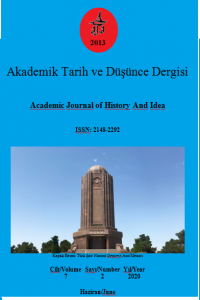Ephesos Kenti Tanrı(ça) ve Kültleri
Ephesos antik kenti, Prehistorik Dönem’den Roma Dönemi’nin sonuna kadar, dini açıdan daima hareketli bir kent olarak tarihteki yerini almıştır. 19. yüzyılın ikinci yarısında başlatılan ve günümüze kadar devam eden bilimsel kazılar sonucunda Ephesos’ta, tanrısal tapınımlara dair izler belirlenmiştir. Ephesoslular da diğer Hellenler gibi tanrı(ça)larını ölümsüzlük dışında insan gibi algılamışlar ve onlar için özel tapınaklar inşa ederek kült faaliyetlerini yerine getirmişlerdir. Böylece Ephesos’ta, tanrı(ça)lar için inşa edilen tapınaklarda, toplumsal olarak önemi var olan binalarda, kamuya açık mekânlarda, küçük kutsal yerlerde ve evlerde tanrı(ça)lara tapınılmış, onlar için dini törenler, festivaller, özel adak günleri ve kurban ritüelleri düzenlenmiştir. Bu çalışmada; kentte varlıkları tespit edilen tüm tanrı(ça)lar ve kültleri ilk kez bir bütün içerisinde incelenmiş ve aynı zamanda tanrı(ça)ların nitelikleri, işlevleri, dinsel uygulama biçimleri, onurlarına düzenlenen bayramları, görev alan din personelleri ve eğer varsa kutsal alanları açıklanmaya çalışılmıştır. Bu çalışmalar sırasında arkeolojik, epigrafik ve nümizmatik veriler ışığında, genel içerikli tüm yayınlar taranarak kapsamlı bir literatür çalışması yapılmıştır.
Gods And Cults of Ephesos City
Ancient city of Ephesos is known as religously dynamic city in the history starting from prehistoric time to the end of the Roman period. Traces of divine rituals were found by the scientific excavations that have been started in the middle of 19th century up to today. As Hellens, Ephesians were also built temples and made cult activities because of their perception of God; like a human being, except immortality. Thus; they made rituals and organize festivals, special events and sacrifice rituals for their Gods who were worshiped in different places such as; homes, minor sacred places, public spaces, socially important buildings and the temples that were made for their Gods. In this study, all gods and cults that were detected in the Ephesos city, were examined as a whole for the first time. Meanwhile; the qualities and functions of gods; religious practice forms, events organized in honor of gods and responsible religion staff and sacred areas (if these areas exist) were tried to explain. During this study, a broad literature study was done by the instruments based on the archaeological, epigraphic and numismatic data and by investigating all detailed or general publications.
Keywords:
Ephesos, Religion, Polytheism, Cult, Epithet,
___
- WALLENSTEN, J., “Karpophoroi deities and the Atticcult of Ge Notes on IG II 4758”, Svenska Instituten I Athen Och Rom Institutum Atheniense Atque Institutum Romanum Regni Sueciae Opuscula Annual of the Swedish Institutes at Athens and Rome, 7 (2014): 193-203. WALTERS, J. C., “Egyptian Religions in Ephesos”, Ephesos Metropolis of Asia: An Interdisciplinary Approach to Its Archaeology, Religion, and Culture Edited by Helmut Koester içinde (281-310), (Harvard Theological Studies 41), Pennsylvania: Trinity Press International, 1995. WIPLINGER, G. & Wlach, G., Ephesos 100 Jahre Österreichische Forschungen. Herausgegeben vom ÖAI, Böhlau Verlag: Wien, Köln, Weimar, 1996. WITT, R. E., Isis In The Graeco-Roman World, Ithaca, New York: Cornell University Press, 1971. WODD, J. T., John Turtle Wodd’un Anıları Efes Kazıları, çev. Ali Tamer Ürüm, İstanbul: Arkeoloji ve Sanat Yayınları, 2014.
- Yayın Aralığı: Yılda 6 Sayı
- Başlangıç: 2013
- Yayıncı: Hakan YILMAZ
Sayıdaki Diğer Makaleler
Oryantalistlerin Hz. Muhammed’in Hayatına Yaklaşımlarına Dair Bazı İncelemeler
The role of External Economic Incentives in times of Political Transitions and Consolidations
Masal Masal İçinde Nartanesi Metninin Söylem Analizi
Ərəb-Xəzər Müharibəsi və Azərbaycan
Eğitim ve Öğretimde Türkçenin Felsefesinin Yeri ve Önemi Üzerine
Kamil Veli NERİMANOĞLU, Selman ARSLANBAŞ, Aysu GÜZEL
İki Ulus Teorisi ve Teorinin Pakistan’ın Kuruluşundaki Rolü
The Non-Cosmopolitan Erasmus: An Examination of his Turkophobic/Islamophobic Rhetoric
